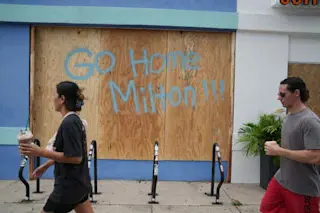Whoever coined the phrase “you can’t polish a turd” may have been full of crap. As it turns out, a city of roughly one million inhabitants flushes $13 million worth of precious metals down toilets and sewer drains on an annual basis, according to a new study from scientists at Arizona State University. Although those scientists didn’t say whether extracting these metals from sewage sludge is economically feasible, they are encouraging us to look at wastewater as a commodity, rather than, well, waste.
In order to arrive at their conclusion, scientists needed to get knee-deep in you-know-what. They used samples of biosolids — dried sewage sludge — that were collected in 2001 as part of the Environmental Protection Agency’s National Sewage Sludge Survey (and you thought working for the census was rough). The samples, which are stored at the National Biosolids Repository in Arizona, came from 94 different wastewater treatment ...













